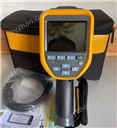美国Fluke 5720A多功能校准器,5720A超高精度多功能校准器 产品简介:
5700A 与5720A 多功能的高精度校准器,专门设计用于满足电学校准工作的需求。产品可输出交直流电压、交直流电流和电阻。宽带电压选件交流带宽从10 Hz 到30 MHz。两款产品均可与 5725A 以及 52120A系列放大器兼容。两款产品均可通过 MET/CAL Plus 校准软件实现自动化。 5700A和5720A具有高级别的准确度,可靠性能,得到计量校准界的一致,5700系列已经成为电学计量实验室中准确度的当然选择。 |
| 技术指标 | |
| 直流电压 | 范围: 0 至 ±1100V 5700A 系列 1 年内性能规格: ±(8ppm输出+0.36ppm量程) 5720A 系列 1 年内性能规格: ±(4ppm输出+0.27ppm量程) |
| 交流电压 | 范围: 220 mV 至 1100V 10 Hz 至 1 MHz 5700A 系列 1 年内性能规格: ±(85ppm输出+3.2ppm量程) 5720A 系列 1 年内性能规格: ±(52ppm输出+3.2ppm量程) |
| 电阻 | 范围: 0 至 100 MΩ,在 x1 和 x1.9 模式下有 18 项数 值5700A 系列 1 年内性能规格: ±14 ppm 5720A 系列 1 年内性能规格: ±10 ppm |
| 直流电流 | 范围: 0 到 ±2.2A(5725A 系列为 11A) 5700A 系列 1 年内性能规格: ±(60ppm输出+4.5ppm量程) 5720A 系列 1 年内性能规格: ±(40ppm输出+2.3ppm量程) |
| 交流电流 | 范围: 9 mA 至 2.2A(5725A 系列为 11A)10 Hz 至 10 kHz 5700A 系列 1 年内性能规格: ±(160ppm输出+18ppm量程) 5720A 系列 1 年内性能规格: ±(140ppm输出+14ppm量程) |
| 宽频带交流电压选项 | 范围: 300 mV 至 3.5V 10 Hz 至 30 MHz 5700A 系列 1 年内性能规格: ±(0.4%输出+0.014%量程) 5720A 系列 1 年内性能规格: ±(0.4%输出+0.014量程) |
| 技术指标 | |
| 预热时间 | 上次预热时间的两倍, 30 分钟 |
| 系统安装 | 可提供后面板输出与机架安装工固定件 |
| 接口 | IEEE-488、RS-232、5725A、5205A 或 5215A、5220A,相锁定 (BNC),相参考 (BNC) |
| 温度性能 | 操作: 0°C 至 50°C 校准: 15°C 至 35°C 储存: -40°C 至 75°C |
| 相对湿度 | 操作: 30°C 下 < 80%,40°C 下 < 70%,50°C 下 < 40% 储存: < 95%,不凝结在高温高湿度环境当中储存过后,通电稳定期需 要四天时间。 |
| 安全性 | 设计符合 UL311;IEC 348-1978;IEC 66E (CO)4;CSA 556B等标准 |
| 屏蔽保护隔离电压 | 20 V |
| EMI/RFI | 设计符合 FCC 规则第15部分、Subpart J,B类;VDE 0871,B类标准 |
| 电源 | 47 至 63 Hz;可选额定电源电压允许 + 10% 波动:100V、110V、115V、120V、200V、220V、230V、240V -------------- 功率: 5700A/5720A 系列:300 VA;5725A 系列,750 VA |
| 尺寸 | 5700A/5720A: 高 17.8 cm (7 in),标准机架伸展,底部高加 1.5cm (0.6in);宽 43.2 cm (17 in),标准机架宽度;全厚 63.0 cm (24.8 in); 机架厚度 57.8 cm (22.7 in) 5725A: 高13.3cm(5.25 in);宽度和厚度5700A/5720A系列 相同两个系列均从机架前端向前伸出 5.2 cm (2 in) |
| 重量 | 5700A/5720A: 27 千克(62 磅) 5725A: 32 千克(70 磅) |
Model:
Fluke 5700A
Product Name:
Multi-Function Calibrator
Instrument Description:
5-function calibrator
Memory Description:
The Fluke 5700A Multi-Function Calibrator contains two types of storage media.
The first is a flash-based storage media and the second is random access
memory (RAM).
Flash Memory:
The flash memory used in the 5700A is a physically block structured device. It
contains three (3) separate blocks. The first block is a special purpose block
intended to hold a small boot loader. It’s used for that purpose within the 5700A.
The boot loader software was designed and maintained by the Fluke Corporation
and is preprogrammed into the flash device for us by the vendor. The boot
loader flash memory can’t be easily changed or reconfigured without special
programming equipment. It’s considered by Fluke to be permanent. If it were
tampered with, or otherwise changed, by anyone other than qualified software
engineer equipped with supporting documentation from Fluke, and external
programming hardware, the calibrator would cease to function. The second
block contains the application software for the 5700A. It’s programmed by Fluke
but is otherwise subject to the same stringent restrictions as the boot code.
Additionally, a checksum is generated and compared on power-up to insure that
no changes to this code have occurred. The third block is logically partitioned, by
the software, into two (2) mini-blocks. The first contains the calibration constants
for the instrument. The second contains all nonvolatile configuration data for the
instrument.
Calibration Constants:
Calibration constants are double precision floating-point numbers. These
numbers are used by the instrument during normal operations to achieve its
rated output accuracy. Each calibration constant (CCO) has a default value and
a limit. Most limits are within a few percent of the default value. It’s impossible to
set a calibration constant to a number outside of its limit. Calibration constants
can’t be accessed directly by a user. They can be changed during a calibration
process. Theoretically, someone could run a calibration procedure and store
numerically encoded data in the calibration constants. The limits on many of
them would obviously complicate the process though.
Non-Volatile Configuration Data:
Non-Volatile configuration data contains user settings like IEEE address, serial
port configuration, calibration dates, etc. It also contains a string of a maximum
of 63 characters. The string is an IEEE 488.2 standard and is set using the
<*PUD> command. It’s queried using the <*PUD?> Command or from the front
panel [see page 5-35, 36 of the Operator Manual for a complete explanation of
these commands].
For re-formatting non-volatile memory, use the following key
strokes from the front panel [see page 3-12 of the Operator
Manual]:
Select the SETUP key on the front panel,
Using the blue ‘soft’ keys under the Control Display, select the
following:
UTILITY
FUNCTNS
Then,
FORMAT
NV MEM
Then,
ALL, or CAL, or SETUP
The instrument will need to be calibrated after this operation and any
configuration data that has been modified by the customer would need to be
restored, including the system clock and the clock format. This is the safest
method, but is highly destructive in that it requires a total recalibration of the
instrument.


















 采购中心
采购中心
